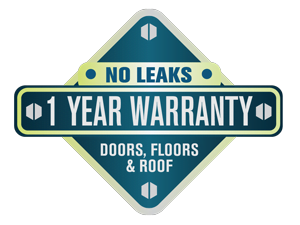
Frequently Asked Questions
YOUR ONE-STOP SHOP FOR USED AND CUSTOM-BUILT SHIPPING CONTAINERS.

FAQs
International standard (ISO) sizes are 20-foot, 40-foot, and 40-foot “high-cube,” which are the three most common sizes. For additional sizes, dimensions, and technical specifications, view our containers for sale.
Unfortunately Miami Conex depots are busy places and most of the containers stacked up are being used for cargo. When you buy a used shipping container from our company, we act as a broker and source a container directly from global Miami Conex equipment providers.
For used containers we are unable to allow the customer to request their color, however we can offer beige and grey color options for One Trip containers. If you're ordering multiple units, we can usually guarantee matching units (upon request, based on availability).
Because the containers are stacked at the Miami Conex depot, we cannot obtain photos or guarantee a specific unit. The depots are storing empty shipping containers for shipping lines and Miami Conex equipment providers. When we place an order for our customers, they pick the next container off the stack that meets their criteria.
The shipping containers we sell come directly from the Miami Conex depot, and because depots are so busy they don't have the ability to let customers select from a wide variety of container options. Additionally, not every container in the stack is for sale (over 95% of containers at depots are not available for sale and are still being used for cargo).
Unfortunately, this means that we're unable to allow customers to pick a specific container. We do guarantee every container we sell, and do our best to set realistic expectations as to what your container might look like.
Miami Conex depots are extremely busy places, and 95%+ of container traffic at depots is cargo related. Unless you have specific business to attend to at the depot, they don't want you there. Trucking yards make for poor shopping malls, and depots aren't set up to cater to individual shipping container buyers.
We won't know what depot your container is coming out of until we get release information, and most depots won't let you into the yard unless you have a release, so we don't recommend going to the depot unless you're handling your own pick-up.
We're happy to load your truck at the depot if you have the proper equipment to safely transport a shipping container (if you don’t have a truck capable of safely hauling a container, we can help you with delivery).
After purchase, we will provide you with a release number and pick-up information. You can then go to the Miami Conex depot on the release and have the container loaded on your truck.
Please be aware you are required to comply with all DOT and OSHA rules while at the Miami Conex depot and Western Container Sales cannot be liable for any issues during transport.
We take your online security seriously. All payment processing happens on secure third party sites like Stripe, Bread, or Shopify's Payment Gateway (credit cards used in the Shopify portal are processed by Shopify Payments, which is powered by Stripe, and credit card payments for rentals are processed by Stripe). Miami Conex uses these third party sites because they are industry leaders in eCommerce transactions. Stripe is trusted by companies like Pinterest and lyft for processing online payments.
Beyond the payment, our site is validated with the high level SSL encryption. Because all of our payment processing is managed by third parties, Miami Conex doesn't keep complete information regarding your credit card or payment method (only enough to identify your transaction). Our goal is to ensure a high level of transaction security for all of our customers.
Miami Conex outsources its delivery service to third-party trucking companies. Containers can be delivered by either flatbed, tilt-bed, low-boy (low-bed) trailer, or chassis. Please note container delivery by flatbed, low-boy (low-bed) trailer, or chassis requires a forklift or crane at the delivery site. Alternatively, you can arrange for pick-up at Miami Conex depot using a trucking company of your choice.
Your shipping container should be placed on firm, dry, level ground, i.e. pavement, gravel, or hard dirt. If your container is being delivered by flatbed trailer, you will need a crane or forklift onsite at the time of delivery so you can lift the container off the truck.
A 20-foot container requires 60-feet of straight running room (no bends), 12-feet wide. A 40-foot container requires 120-feet of straight running room for delivery by tilt-bed truck (no bends), 12-feet wide. For the height, a minimum of 14-feet of overhead clearance is needed for containers on a chassis/tilt-bed or on a low-bed (low-boy) so as not to hit wires, etc. If the trucking company cannot make delivery, customer will be responsible for all related trucking and transportation costs.
Once you have ordered your shipping container, Miami Conex will issue you an invoice. Once your invoice is paid via check, money order, wire transfer, cash, or credit card, Miami Conex will release your container to you or to the trucking company making your delivery. Contact us with questions or for more information.
We offer a 5% volume discount for multi-unit orders that's calculated at checkout. We can offer deeper discounts for customers who plan to purchase more than 10 shipping containers at a time.
Using a container chassis has a title, but shipping containers do no have titles.
In order to move a container, you'll always need a chassis or trailer (which will require a title and vehicle registration), but the container itself does not require title or registration in the United States.
What's the Difference between CWO & WWT?
CWO means “cargo-worthy” or that a container has the structural integrity to be stacked 7-high on a cargo ship. WWT means “wind and water tight” and is primarily used for storage.





